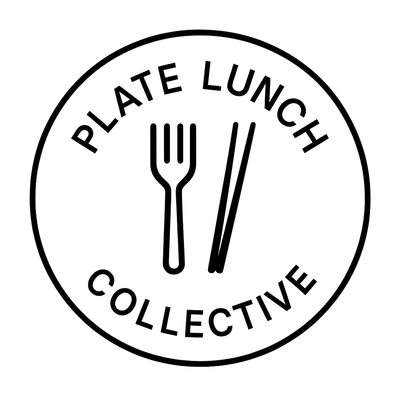Campaign Strategy & Market Testing for Hawaii Businesses

Marketing campaign planning lays the groundwork before you hit publish. For Hawaii businesses competing in unique market conditions like tourism seasonality and mainland audience targeting, campaign planning becomes even more critical when AI systems determine who sees your message and when
Strategy without a plan is guesswork. Strategy without AI considerations is obsolete.
When it's still in the doc or bouncing around Slack, every campaign looks solid. But out in the AI-mediated wild? Ideas crack under algorithmic misinterpretation, non-linear discovery, or when recommendation engines serve your content completely out of sequence.
Most marketing fails not because the creative was bad, but because teams still plan for linear customer journeys that no longer exist. They design campaigns assuming controlled message delivery when AI systems now determine what gets seen, when, and in what context.
The old playbook assumed you could guide prospects through awareness, consideration, and decision in sequence. Now someone might encounter your "decision-stage" content first because an answer engine cited it in response to a top-funnel question.
The Cost of Legacy Campaign Architecture
Campaigns designed for controlled delivery become expensive lessons when AI systems reshape the discovery experience. When your carefully sequenced messaging gets algorithmically reshuffled, you don't just lose media spend. You lose narrative coherence, positioning clarity, and often the ability to guide prospects toward the insights that make your solution compelling.
A enterprise software company launched what looked like a textbook campaign around "workflow automation for scaling teams." They built perfect awareness content, detailed consideration materials, and compelling decision-stage assets. Each piece worked beautifully in sequence.
But when answer engines started citing their mid-funnel comparison content in response to basic "what is workflow automation" queries, prospects were encountering detailed competitive analysis before understanding the fundamental problem. The content was accurate, but the AI-mediated discovery order made them sound like they were selling complexity rather than simplicity.
The campaign wasn't wrong. The sequence wasn't wrong. But they'd planned for human-controlled journeys in an AI-controlled discovery environment.
Why Traditional Planning Breaks in AI-Mediated Discovery
Standard campaign development assumes linear touchpoint progression and controlled message delivery. Teams map customer journeys, create stage-appropriate content, and optimize for sequential engagement.
But AI systems don't respect your customer journey maps. Recommendation algorithms surface content based on relevance signals, not campaign logic. Answer engines cite whatever best answers the query, regardless of where it fits in your intended sequence. Platform AI determines reach based on engagement patterns, not campaign strategy.
Planning for controlled delivery in an algorithmic environment is like choreographing a dance for an audience that might enter the theater at any moment and from any door.
The New Pressure Points
Modern campaign planning requires testing for both human psychology and algorithmic interpretation. Every asset needs to work independently while contributing to a coherent narrative when assembled in any order.
Algorithmic interpretation: How will AI systems categorize and cite your content? Will recommendation engines understand the relationships between campaign assets? Can answer engines extract accurate information when citing individual pieces out of context?
Non-linear discovery: What happens when someone encounters your consideration content first? Does your decision-stage messaging make sense without the awareness foundation? Can prospects understand your value proposition regardless of entry point?
Competitive algorithmic landscape: How will your campaign assets perform when AI systems surface them alongside competitor content? Will your messaging remain differentiated when stripped of brand context and presented as algorithmic recommendations?
What Survives AI-Mediated Discovery
Campaigns that work in the modern environment share certain architectural principles. They're designed for non-linear discovery, algorithmic interpretation, and competitive algorithmic environments.
Asset independence: Every piece of campaign content works as a standalone introduction to your value proposition. Someone encountering any single asset can understand what you do, why it matters, and how to learn more.
Semantic consistency: Campaign messaging uses consistent terminology and concepts that AI systems can parse and connect. Your awareness content and decision content teach algorithms the same thing about your category and positioning.
Context resilience: Campaign assets maintain their meaning when cited by answer engines, recommended by algorithms, or encountered without supporting brand context. The core insight survives algorithmic delivery.
How We Actually Plan for AI-Mediated Campaigns
We design campaigns for the discovery environment that actually exists, not the one marketing textbooks describe. That means planning for algorithmic intermediation from the start, not adding AI considerations as an afterthought.
Discovery pathway mapping: Understanding how AI systems surface content in your category, what triggers algorithmic recommendations, and how answer engines determine citation-worthy information.
Algorithmic coherence testing: Ensuring your campaign assets teach AI systems consistent information about your positioning, so algorithmic delivery reinforces rather than fragments your narrative.
Non-linear narrative architecture: Building campaigns where the story makes sense regardless of entry point, and every asset contributes to algorithmic understanding of your expertise.
This isn't traditional campaign planning with AI testing added. It's campaign architecture designed for an environment where AI systems mediate most discovery experiences.
The Reality
Strong campaigns now require planning for both human psychology and algorithmic interpretation. Ideas that work when delivered by recommendation engines, cited by answer engines, and discovered through AI-powered search.
The campaigns that perform consistently are designed for the discovery environment that actually exists: non-linear, algorithmically mediated, and competitively dense. They succeed because they're architected for how people actually encounter marketing content in 2025.
Frequently Asked Questions
What is marketing campaign planning?
It's the step-by-step playbook for AI-mediated discovery. We define what success means, map how AI systems will surface your content, and plan for non-linear customer journeys where people might encounter any campaign asset first.
How does this planning differ from regular content planning?
Content planning sets publishing cadence. Campaign planning sets discovery architecture. It aligns messaging, algorithmic signals, and measurement toward specific goals while ensuring every asset works independently when AI systems serve them out of sequence.
What kinds of campaigns do you help with?
We work on launches, lead-gen, rebrands, and ongoing efforts that need to perform in AI-mediated environments. If your campaign needs to work when recommendation engines, answer engines, and platform algorithms determine how prospects discover you—that's our focus.
Tie strategy to execution.
When campaigns, brand, and analytics need a single guiding hand, a Fractional CMO delivers.
Connect with a Fractional CMO